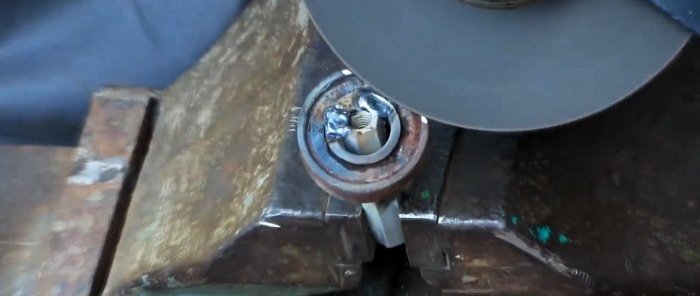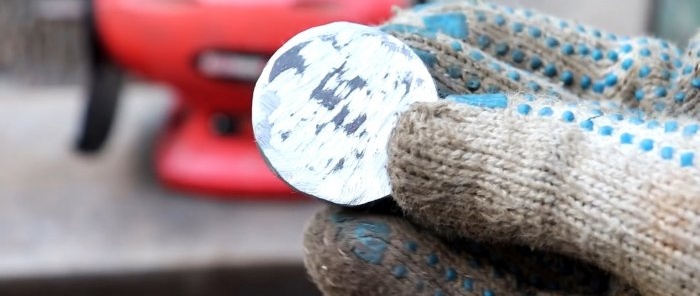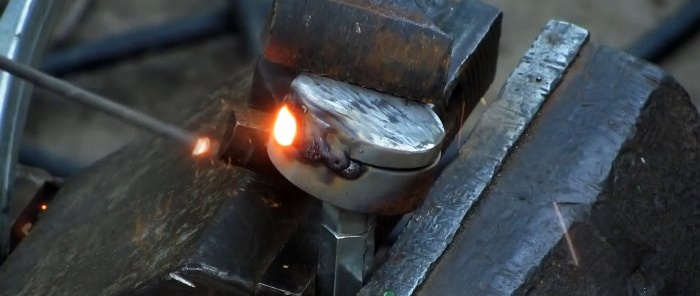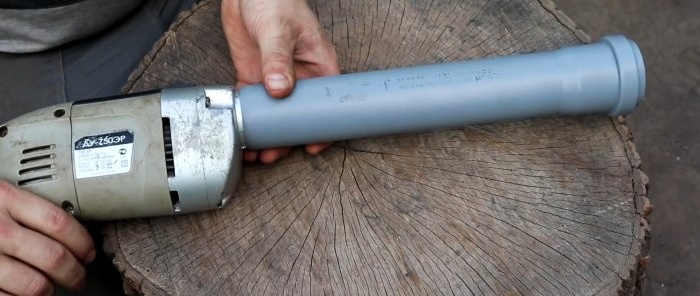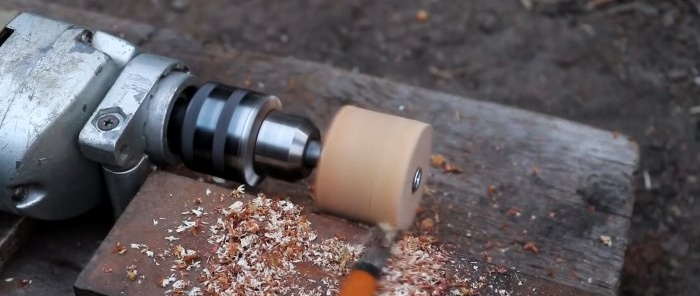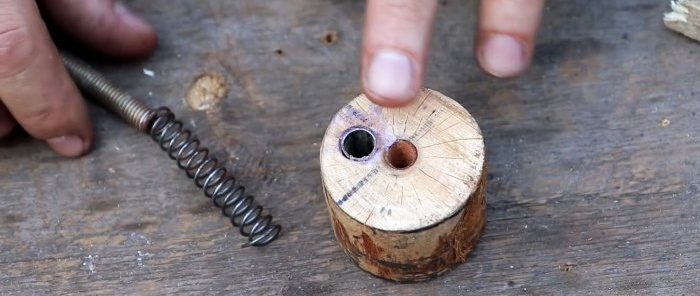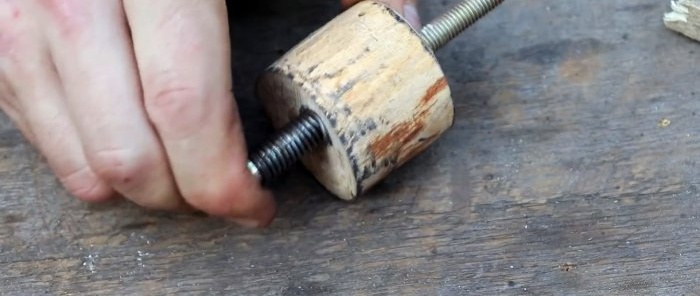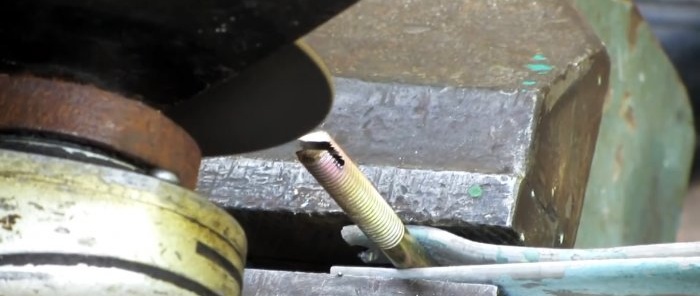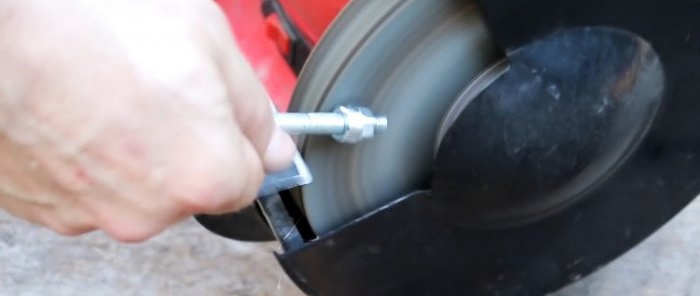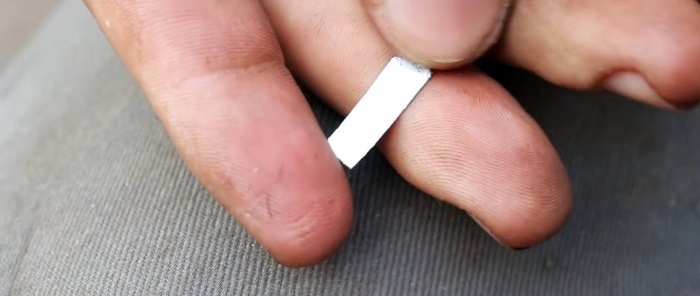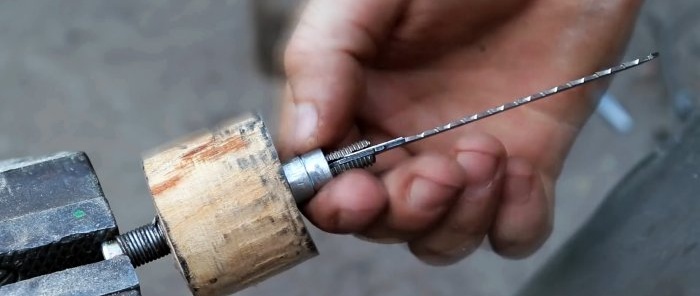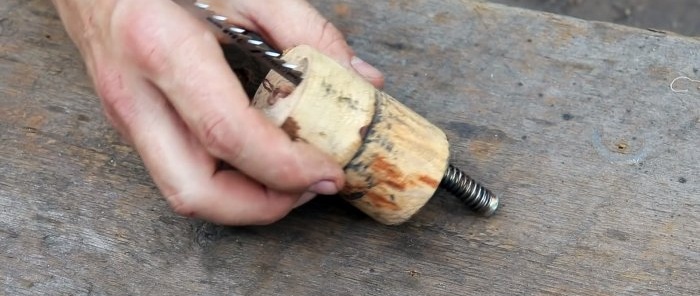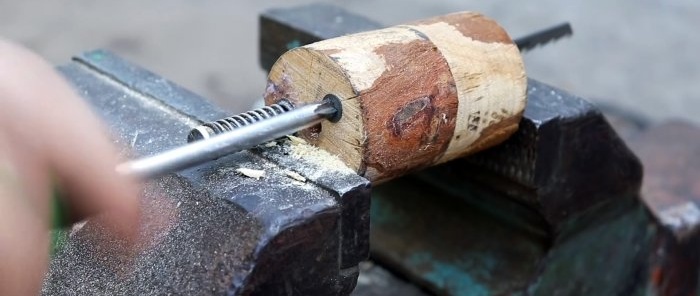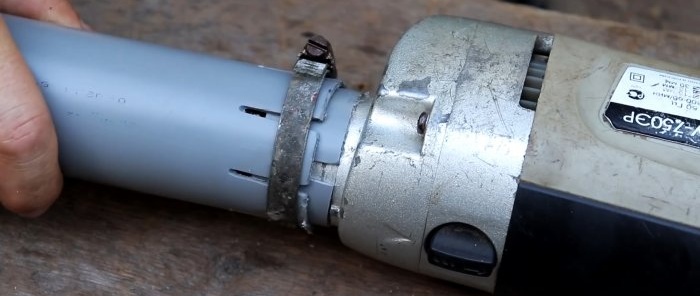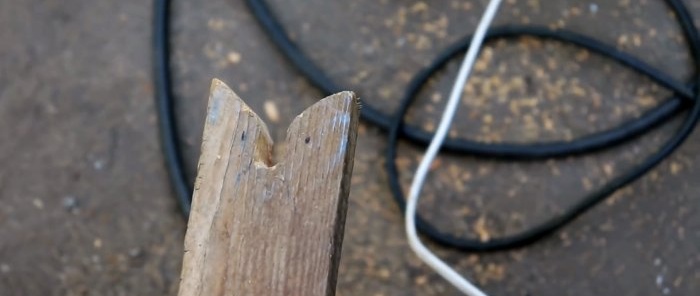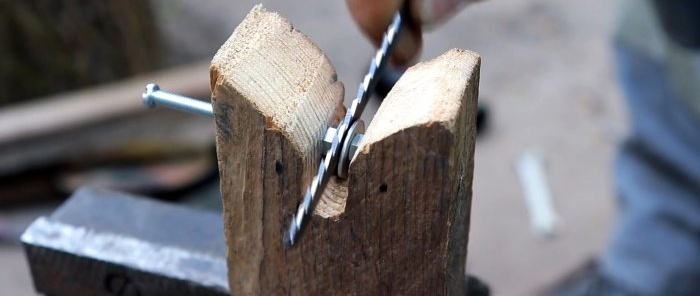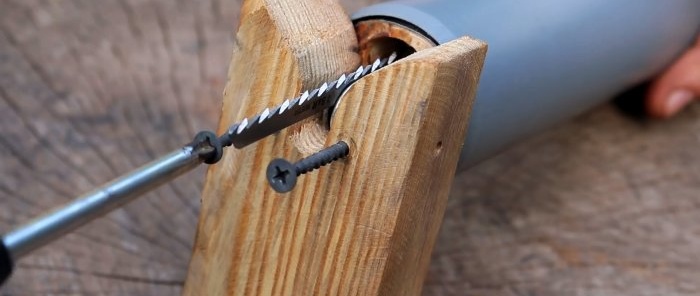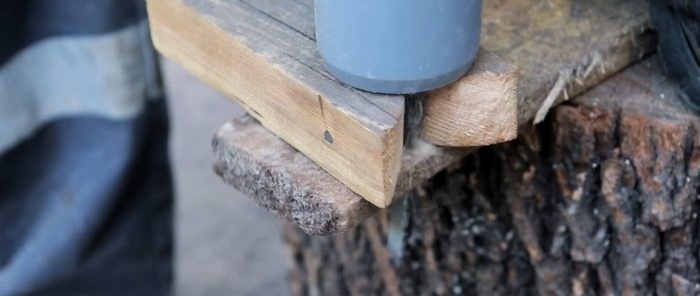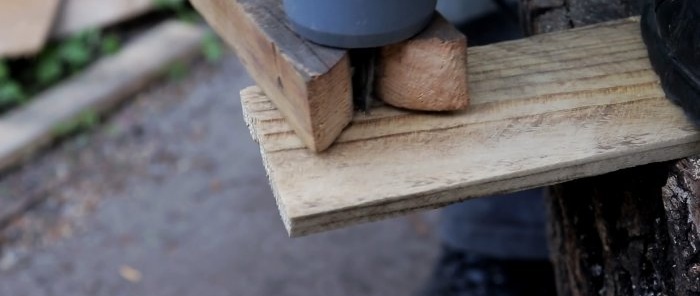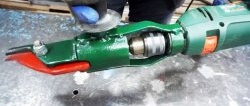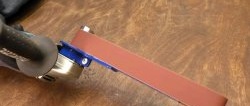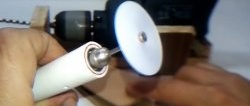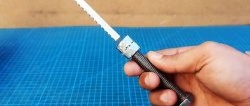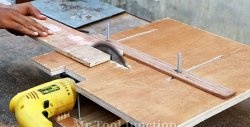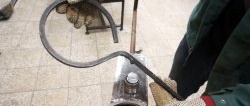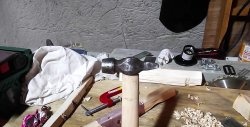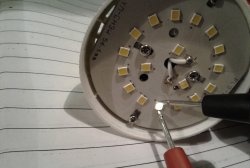How to make a jigsaw attachment for a drill or screwdriver
To quickly cut wooden blanks into shapes, you can attach an attachment to a drill or screwdriver. It works like a jigsaw, so if you don’t have such a tool yet, you can successfully replace it with a homemade one.
The extended nuts are connected with a pin and then welded into the inner race of the bearing at an angle.
Next, the front side of the bearing is welded with a sheet steel lining. The workpiece is clamped in the drill chuck and lightly ground on the edges.
Then the sewer pipe is put on the drill.
2 plugs are carved from wood into the pipe. They are drilled through the center, clamped with bolts and ground.
A hole is drilled in one workpiece with an offset. A metal sleeve is pressed into it.
Next, a long bolt is inserted with a cut from the end to a depth of 30-35 mm.
A spring is placed on the bolt before installation.From the cut side, nuts with ground edges are screwed onto it.
A jigsaw file is inserted into the bolt slot and wedged with metal inserts. Then the blade is clamped by unscrewing the nuts.
A wider, offset hole is drilled into the second plug and placed over the nail file. Then it must be screwed to the bottom plug with a self-tapping screw.
The plugs with the canvas are pressed into the pipe. If they fit freely, they need to be wrapped with tape. Longitudinal cuts are made on the pipe on the side adjacent to the drill, and it is tightened with a clamp. Now, when the eccentric rotates, the bolt with the file will be pushed forward and immediately return due to the spring.
Next, the guide sole of the jigsaw is cut out of the board. A wedge is cut out from one end of it, its top is bored with a round file. Then a bolt with screwed nuts and two washers located between them is installed between the horns. The sole is screwed to the plugs in the pipe with self-tapping screws so that the nail file is located between the washers.
Jigsaw attachment in operation:
Basic materials:
- extended M8 nuts – 2 pcs.;
- bolts M8 and M10;
- nuts M10 – 2 pcs.;
- Sheet steel;
- old bearing with an outer diameter of up to 40 mm;
- sewer pipe 50 mm;
- wooden blanks;
- clamp;
- jigsaw file;
- compression spring;
- self-tapping screws
Nozzle manufacturing process
The extended nuts are connected with a pin and then welded into the inner race of the bearing at an angle.
Next, the front side of the bearing is welded with a sheet steel lining. The workpiece is clamped in the drill chuck and lightly ground on the edges.
Then the sewer pipe is put on the drill.
2 plugs are carved from wood into the pipe. They are drilled through the center, clamped with bolts and ground.
A hole is drilled in one workpiece with an offset. A metal sleeve is pressed into it.
Next, a long bolt is inserted with a cut from the end to a depth of 30-35 mm.
A spring is placed on the bolt before installation.From the cut side, nuts with ground edges are screwed onto it.
A jigsaw file is inserted into the bolt slot and wedged with metal inserts. Then the blade is clamped by unscrewing the nuts.
A wider, offset hole is drilled into the second plug and placed over the nail file. Then it must be screwed to the bottom plug with a self-tapping screw.
The plugs with the canvas are pressed into the pipe. If they fit freely, they need to be wrapped with tape. Longitudinal cuts are made on the pipe on the side adjacent to the drill, and it is tightened with a clamp. Now, when the eccentric rotates, the bolt with the file will be pushed forward and immediately return due to the spring.
Next, the guide sole of the jigsaw is cut out of the board. A wedge is cut out from one end of it, its top is bored with a round file. Then a bolt with screwed nuts and two washers located between them is installed between the horns. The sole is screwed to the plugs in the pipe with self-tapping screws so that the nail file is located between the washers.
Jigsaw attachment in operation:
Watch the video
Similar master classes
Particularly interesting
Comments (0)


